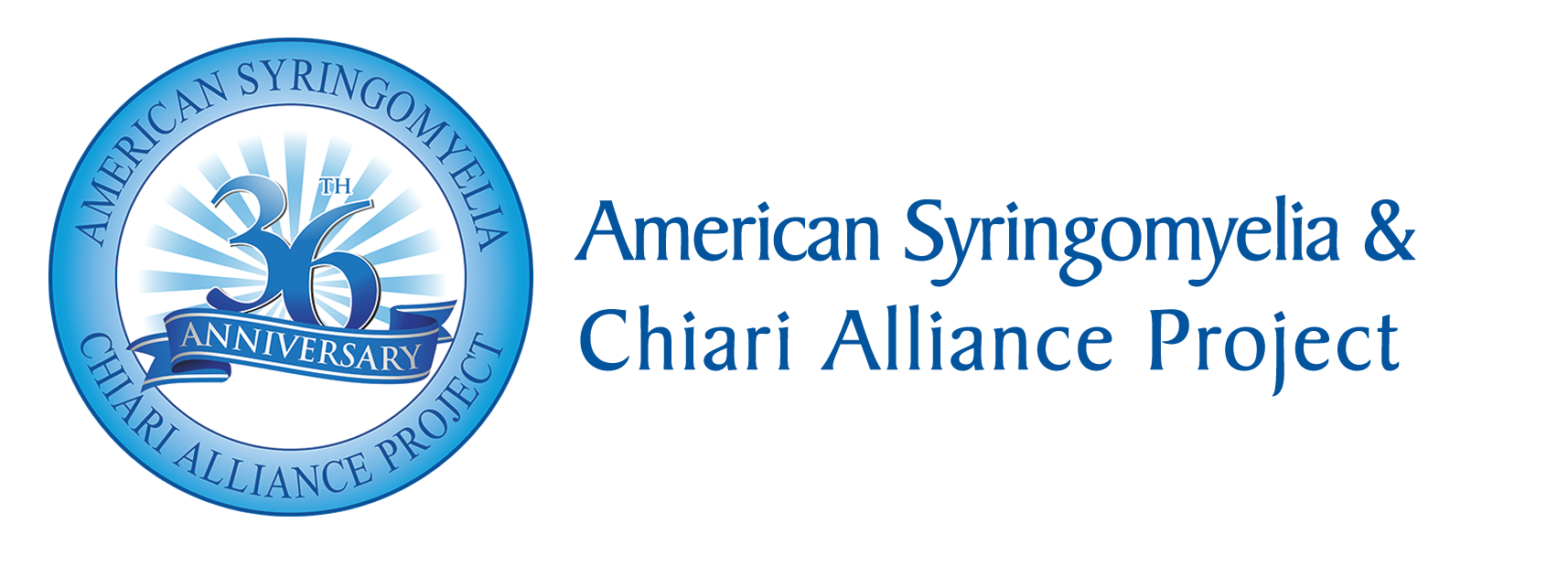by Clare Rusbridge BVMS DipECVN MRCVS
Could mans best friend help in the quest to understand syringomyelia? Chiari malformation occurs in dogs and, in some breeds, such as the cavalier King Charles spaniel, it is very common indeed. The Cavalier is a lovable and loving spaniel that was established as a breed in 1928 in response to a reward offered for recreating a spaniel similar to those depicted in portraits of the era of the British King Charles II. Their friendly disposition ensures that they are one of the most popular toy dogs in Britain, and they are also increasingly common in other western countries, including the USA.
Clare Rusbridge, a veterinary neurologist working in England, met her first dog with Chiari malformation, Beau, in 1995. Beau had been sent to Clare because he had a forelimb, (i.e., arm), weakness. In addition, he appeared to suffer from intense neck and shoulder irritation, especially when he was walked with a neck collar and leash. A consequence of this was that he scratched in the air with one hindlimb whilst walking. At first Clare was bewildered, and despite many tests, she could not find the cause of Beaus strange signs. It subsequently became apparent that Beau was not the only Cavalier with this scratching behaviour. Finally, in 1997, Clare was able to get access to a MRI scanner that could image animal spinal cords. Five dogs, including Beau, had a scan revealing that they all had syringomyelia and a Chiari malformation. Eight years on and hundreds of Cavaliers all across the world have now been diagnosed with the disease.
Cavaliers with syringomyelia usually have their first signs between 6 months and 3 years of age; however, dogs of any age may be presented. Progression of the disease is very variable. Some dogs have the tendency to scratch with mild pain only and other neurological signs never, or very slowly, develop. Others can be severely disabled by pain and exhibit neurological deficits within 12 months of the first signs developing. Many people suffering with syringomyelia may find the clinical signs experienced by dogs familiar. Pain is by far the most important feature of the disease. Many ask the question, How can you tell a dog is in pain? It is not very difficult, especially if the dog in question screams for apparently little reason, i.e., having its ear groomed. Once friendly, pets may become withdrawn and stop wanting to play. Owners often report that their dog is worse at night; when first getting up; during hot or cold temperature extremes; when excited; or related to posture, i.e., preferring to sleep with head elevated. The dog may seem to be overly sensitive to touch on one side of the neck, ear, shoulder, chest, and often scratch at that area. Some dogs develop a scoliosis and some have weakness. Treatment of dogs is very similar to humans with the same condition. The bond between dog and owners can be as close as between humans, making it very difficult to make decisions about treatment such as surgery.
How does this help human sufferers? There are many possibilities:
- Understanding the genetics. Chiari malformation is inherited in this breed and, if the causal gene or genes could be identified, then scientists could study what this gene does and why Chiari malformation and syringomyelia develop. Clare Rusbridge and her team, with considerable help from Cavalier breed clubs and owners, have established a worldwide DNA collection from affected dogs and their families. They now have over 800 samples and are working with a neurogenetics laboratory in Montreal with the ultimate aim of finding the gene(s).
- Better understanding of the symptoms. Why are some dogs/people so much more painful than others? Why do some not make the expected improvement after surgery? Why do some patients have an intensification of pain after surgery? These are all questions that study of the dogs could help answer.
- Understanding how and why syringomyelia develops. In some litters of Cavalier puppies, it is highly likely that most will develop syringomyelia. These dogs could be studied, i.e., with serial MRI scans from an early age before and after the syringomyelia has developed. As a natural model of Chiari malformation, these dogs can provide useful information
- Improving treatment of both people and dogs. Better understanding of the disease leads to the possibility of more effective drugs and surgery. The Cavaliers in question are loved pets and are cared for by veterinary neurologists. They vastly outnumber human patients so there is a greater possibility to learn from successful experiences and apply these to humans. Similarly, human sufferers can provide dog owners with an understanding of what their pets can be experiencing and ensure they are provided with care.
Syringomyelia is a devastating disease in both dogs and humans. We hope that the veterinary and medical professions working together on this devastating disease can help man and his best friend
References
- Rusbridge C and Knowler SP, 2003 Hereditary aspects of occipital bone hypoplasia and syringomyelia (Chiari type I malformation) in cavalier King Charles spaniels. Veterinary Record 153: 107-112
- Rusbridge C and Knowler SP, 2004 Inheritance of Occipital Bone Hypoplasia (Chiari type I malformation) in Cavalier King Charles spaniels. Journal of Veterinary Internal Medicine 18, 673-678.
- Rusbridge C, MacSweeny JE, Davies JV, Chandler KE, Fitzmaurice SN, Dennis R, Cappello R and Wheeler SJ, 2000 Syringomyelia in Cavalier King Charles Spaniels. Journal of the American Animal Hospital Association 36: 34-41.
- Clare Rusbridge BVMS DipECVN MRCVS Stone Lion Veterinary Centre, 41 High Street, Wimbledon, SW19 5AU Tel: 00 44 208 9464228, Fax: 00 44 208 7860525 neuro.vet@btinternet.com

